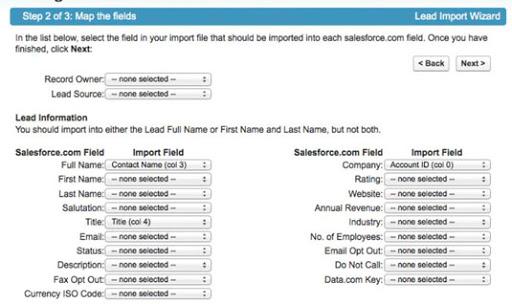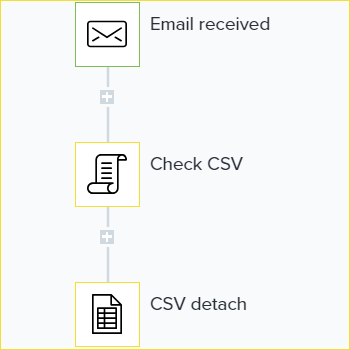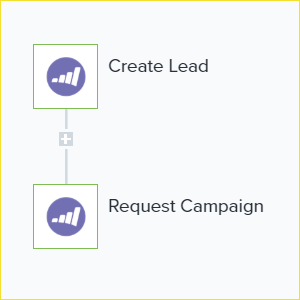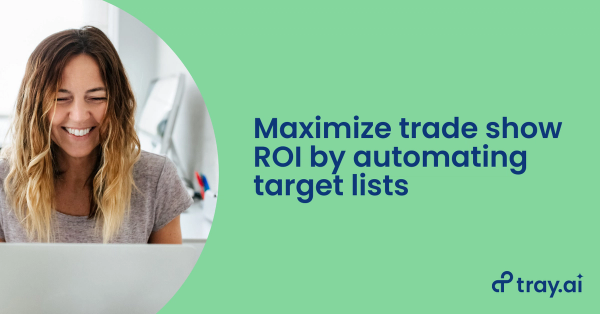The speed of lead follow-up is one of the most important factors in driving more conversions. For successful lead lifecycle management, which begins after lead capture and includes lead enrichment, lead-to-account matching, lead routing, and follow-up, uploading lead lists is the very first step in the process. Until your leads are actually ingested into your marketing stack, you can’t enrich them, route them to sales, or follow up with them. Marketing and revenue operations (RevOps) teams must prioritize automating lead list uploads if they want to close-win more deals and drive more revenue.
If you are manually formatting, de-duplicating, collating, and uploading your lead lists, there’s a good chance the people on your marketing team responsible for the process aren’t very happy about it. (They may even be chanting “Down with the Data Loader!” once you’re out of earshot.)

You’ve probably seen this screen before. It’s probably not a welcome sight. We’re sorry.
However, since marketing teams are always on the hunt for new leads, most teams source their leads from multiple channels, including email, social (paid and unpaid), search (again, paid and unpaid), events, webinars, and many others. The process never ends, and it often means painstaking manual work double-checking and vetting lead data spreadsheets.
In fact, companies spend upwards of 40 hours per month processing leads for upload. Letting leads sit for as little as one hour makes you 7x less likely to ever speak with a decision-maker, and puts your sales team that much farther from turning any of those costly leads into actual closed-won deals.

What if you could automatically complete every step of this process in minutes, not hours?
A better way to automatically ingest leads? A unified, AI-powered iPaaS
The biggest barriers between you and error-free lead list uploads are:
- Data issues (errors, formatting, etc.)
- No robust integrations to sync data across apps, error-free
- Manual spreadsheet wrangling
- Repetitive field mapping
Modern iPaaS platforms are purpose-built to integrate cloud-based applications like your MAP, CRM, outbound email automation, and others. With AI-powered automation, marketing and RevOps teams can automate mission-critical lead lifecycle processes like instant lead response and scheduled batch processing. The best ones also have advanced helpers to seamlessly sync, cleanse, and flow data, and can even accept lead lists in a variety of different ways, such as via FTP, webhooks, or even submitting them via email (as we’ll cover in our example below).
Part I: Automating lead list uploads
Here’s the first leg of an automated workflow in our automation platform that automates the lead upload process:

- Email trigger: The process starts with an email trigger whenever someone emails a new lead list in CSV format to an email address specific to this workflow. The sender could be a member of the sales team uploading the spreadsheet from their badge scans after an eventful day at a conference, a marketing operations manager pulling in leads from a successful campaign, a third-party lead vendor, or even an external contractor submitting manually-enriched leads.
- Check CSV: This step uses an automation helper to verify that lead data is properly formatted for upload.
- CSV Processor: This step uses an advanced helper that processes CSV files. Since each lead in the CSV will have its own row with information including first name, last name, email address, and other details, the helper begins the process of pulling the lead data, row-by-row, from the submitted spreadsheet.
Part II: Loading in leads row-by-row
The next part of our automated workflow loads in lead data stored in our CSV file row-by-row:

- Loop helper: The loop helper iteratively runs through repeated processes until they’re complete. In this case, it uploads row after row of leads from the submitted CSV file.
- Text helper(s): The last two steps here are text helpers that verify and properly format the lead owner field.
Part III: Creating leads and triggering follow-up campaigns
The final part of our journey creates the uploaded leads within our MarTech stack and begins the follow-up process:

- Create lead: This workflow step creates a new lead record in the marketing platform (in this case, Marketo).
- Request campaign: Finally, the workflow triggers appropriate campaign follow-up within Marketo.
This workflow runs within minutes and lets us take in lead lists from any source and rapidly upload them into our system to create new records for follow-up activities like lead-to-account matching, lead routing, and lead enrichment.
While this is one way to approach this important use case, the flexibility of Tray Universal Automation Cloud, our unified, multi-experience iPaaS, lets users take many different approaches.
To see Tray Universal Automation Cloud in action, schedule a demo.




